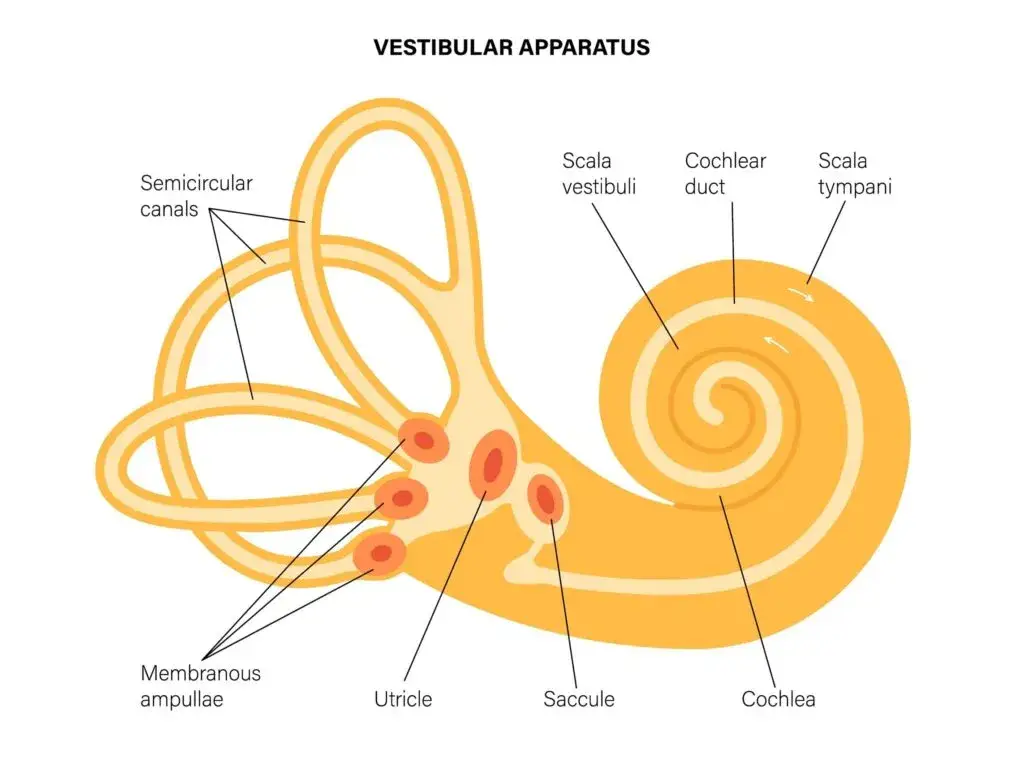
What doctor to see when you’re dizzy: Feeling dizzy can be frightening. Whether your world starts spinning when you roll over in bed, you feel unsteady in busy stores, or you’re battling waves of nausea and brain fog during Florida’s stormy days, one question rises to the top: What doctor should I see when I’m dizzy?
Here’s the honest, encouraging answer we share with patients every day in Sarasota, Lakewood Ranch, and Bradenton: start with an Upper Cervical Chiropractor. When dizziness shows up, many people understandably chase symptoms—trying motion-sickness medications, allergy pills, or balance exercises—without anyone asking the crucial upstream question: Is your head sitting squarely on your neck, or is there a subtle upper cervical misalignment irritating the nerves that control balance, eye movements, and blood flow?
At Lavender Family Chiropractic in Sarasota, we specialize in the upper neck—specifically the atlas (C1) and axis (C2). These two small bones cradle your brainstem, house delicate neural pathways, and serve as a critical crossroad for proprioception (your body’s “internal GPS”), vestibular information from the inner ear, and cervical input to your eyes. When this region is even slightly out of alignment, it can create the perfect storm for dizziness and vertigo. Our gentle, precise, upper cervical chiropractic adjustments (no popping, twisting, or cracking) are designed to correct the foundational problem—so your body can steady itself naturally.
What Doctor To See When You’re Dizzy: Why Start With an Upper Cervical Chiropractor When You’re Dizzy
When patients ask, “Who should I see first?” we suggest beginning with an upper cervical evaluation for three big reasons:
- Root-Cause Focus
Dizziness and vertigo aren’t random. Your vestibular system (inner ear), ocular system (eyes), and cervical spine constantly trade information to keep you upright. If the upper cervical spine is misaligned, it can irritate nerve pathways and sensory maps that tell your brain where you are in space. This irritation can mimic or amplify inner-ear problems—even when ear tests look normal. - Neural “Traffic” at the Brainstem
The atlas and axis protect the lower brainstem, where vestibular nuclei integrate signals from your inner ears, neck, and eyes. Irritation here can create abnormal signals your brain interprets as spinning, rocking, swaying, visual motion sensitivity, or persistent unsteadiness. - Gentle, Precise, Measurable Care
We don’t guess. We measure. Using 3D CBCT imaging of the upper neck and functional nervous system scans (paraspinal infrared thermography via Tytron), we assess alignment, biomechanics, and neural tone. Then we deliver an individualized, low-force correction tailored to your exact anatomy. No twisting, no popping—just precision and follow-up scans to verify improvement.
What “Upper Cervical Misalignment” Means (and Why It Can Make You Dizzy)
An upper cervical misalignment is a small, often painless shift in how C1 and C2 relate to the skull and each other. This shift can:
- Irritate or “pinch” sensitive structures in the upper neck, including the C2 dorsal root and surrounding soft tissues, contributing to head pressure, neck tightness, and referred facial/ear sensations.
- Distort proprioceptive input from cervical muscles and joints, tricking your brain into perceiving motion when you’re still (or amplifying normal motion into dizziness).
- Influence the trigeminocervical nucleus, a convergence hub for neck and cranial nerve input, potentially fueling headaches, migraines, facial pain, and visual motion sensitivity that often travel with dizziness.
- Alter vascular and CSF dynamics around the cranio-cervical junction, which may compound pressure sensations and motion intolerance in susceptible individuals.
In short, when the upper neck is off, your balance “software” can misfire—producing vertigo, unsteadiness, and motion sensitivity that no amount of ear-only or eye-only treatment fully resolves. Correct the structural issue, and the system can finally recalibrate.
How Upper Cervical Care Compares with ENT, Vestibular Therapy, and Neurology
Let’s be clear: ENTs, vestibular therapists, and neurologists are valuable allies. Many of our patients arrive after working with these clinicians. However, the standard pathway often treats symptoms and compensations rather than structure.
- ENT (Otolaryngology) focuses on the inner ear—useful for ruling out infections, perforations, or classic BPPV. But if the neck is the driver, ear-focused care can stall.
- Vestibular therapy trains your brain to compensate for bad signals. It’s powerful—but when the source of the bad signal is a misaligned atlas, you may be training around a problem that keeps re-aggravating.
- Neurology evaluates central causes and prescribes medications to suppress symptoms. These can be a lifeline during acute flares, but long-term, suppression without structural correction can leave people dependent on pills or coping strategies.
Upper cervical chiropractic asks first: Why is the signal wrong? If a misalignment is irritating nerves and distorting proprioception, we correct it with precision and re-test to ensure the nervous system calms and normalizes.
A Closer Look at Common Dizziness Diagnoses—and the Upper Cervical Link
Dizziness wears many masks. Here’s how the most common labels show up in real life—and how the upper neck often sits at the center.
Vertigo (General)
Vertigo is the sensation of spinning (you or the room) with nausea, visual instability, and imbalance. While it’s often blamed on the inner ear, cervical proprioception feeds the same brainstem hubs that integrate vestibular signals. If upper cervical input is distorted, the brain can “believe” you’re moving even when the ear is quiet. We frequently see “vertigo” resolve as the atlas alignment stabilizes and neck-driven noise quiets.
BPPV (Benign Paroxysmal Positional Vertigo)
BPPV classically stems from otoconia (ear “crystals”) slipping into a semicircular canal—triggering brief spins with bed movements. Canalith repositioning maneuvers (like Epley) can help, yet many people experience recurring BPPV. Why? If your upper cervical alignment is off, the neck’s proprioceptive mismatch and habitual head postures can keep irritating the vestibular system or setting you up for re-dislodging episodes. We often pair precise atlas corrections with home positioning strategies to reduce recurrence and restore durable stability.
MdDS (Mal de Débarquement Syndrome)
MdDS feels like persistent rocking or swaying after sea travel or even spontaneously. Visual motion sensitivity is common. We consistently find upper cervical misalignment in MdDS patients, and when we correct it, the neck-to-brainstem noise diminishes, making it easier for the brain to recalibrate to steady ground. Patients describe it as turning down the “background hum” that kept motion sensations stuck.
PPPD (Persistent Postural-Perceptual Dizziness)
PPPD is chronic non-spinning dizziness—worse in upright posture, busy visuals, or scrolling screens. Anxiety often worsens it (understandably). Many PPPD patients have neck stiffness, head pressure, and a history of whiplash or prolonged computer posture. By addressing atlas/axis mechanics, we reduce cervical proprioceptive conflict and help the autonomic nervous system settle, making vestibular rehab and visual therapy more effective and less provocative.
Meniere’s Disease
Meniere’s brings episodic vertigo attacks, ear fullness, tinnitus, and fluctuating hearing. While inner-ear fluid dynamics are central, upper cervical irritation can amplify autonomic swings, Eustachian tube dysfunction, and neck-jaw tension that aggravate ear symptoms. Patients often report fewer, less intense episodes as their upper neck stabilizes and sympathetic overdrive cools.
Vestibular Migraine
Vertigo, visual motion sensitivity, and head pressure without a typical “headache” are common. The trigeminocervical complex links cervical input and migraine pathways. Correcting upper cervical misalignment reduces nociceptive drive into this complex, often decreasing both migraine frequency and vestibular sensitivity. Many patients find they rely less on rescue meds as their neck alignment holds.
Important note: Every human is different. Upper cervical misalignment can be a primary driver for many people—and a major amplifier for others. Our goal is to identify your pattern and correct it precisely.
What to Expect at Lavender Family Chiropractic (Sarasota)
1) Detailed History & Functional Exam
We map your symptom triggers (rolling in bed, grocery store aisles, storm fronts, screen time), prior diagnoses, and injury history (car accidents, sports, dental work, concussions, or “nothing obvious” except years of desk posture). We assess posture, balance, cervical range of motion, eye tracking comfort, and autonomic tone.
2) 3D CBCT Imaging of the Upper Neck
Our state-of-the-art 3D CBCT scan gives a precise picture of C1/C2 alignment and the cranio-cervical junction. We’re looking for subtle shifts most plain X-rays miss. This data informs an individualized, gentle correction plan.
3) Functional Nervous System Scans (Tytron Paraspinal Infrared Thermography)
Thermography helps us measure autonomic changes along the spine. It’s non-invasive and provides objective pre- and post-correction comparisons. Calmer scans often track with calmer symptoms.
4) Gentle, Precise Upper Cervical Correction
No twisting. No cracking. Using calculated vectors, we apply a focused, low-force correction to restore alignment. Patients are often surprised by how light the adjustment feels—and how quickly their body responds.
5) Rest & Re-Check
We allow your nervous system to integrate the correction, then re-scan to confirm improved balance and tone. Early visits build momentum toward stability; later visits focus on holding the alignment longer between check-ins.
6) Progress Tracking & Support
We’ll give you practical tips: sleep positions that protect alignment, workstation ergonomics, hydration and mineral balance (especially important in Florida heat), gentle vestibular-friendly movement, and strategies for stormy or high-stimulus days. Our goal is durable stability—not a lifetime of constant adjustments.
But My ENT/Vestibular Therapist/Neurologist Said…
Great. Keep them in your corner. We’re not asking you to abandon anything that helps. We’re encouraging you to add the missing piece: structural correction. Many of our patients do best when they combine targeted upper cervical care with:
- Vestibular rehab (once neck-driven noise calms, exercises feel more tolerable and progress faster)
- Lifestyle tuning (sleep rhythm, hydration, avoiding rapid head-neck strain)
- Trigger awareness (visual motion, barometric shifts, screen habits)
- Medical care as needed (safety first for severe attacks or new symptoms)
When the neck is aligned, your other providers’ work often sticks better.
Who We Help & Where We Serve
Lavender Family Chiropractic proudly serves Sarasota, Lakewood Ranch, Bradenton, Parrish, Ellenton, Venice, Osprey, Punta Gorda, St. Petersburg, Siesta Key, Longboat Key, Lido Key, and Myakka City—and we regularly see patients who travel from across Manatee and Sarasota counties for precise upper cervical chiropractic care.
If you’ve been searching for “chiropractor Sarasota Florida,” “upper cervical chiropractor near me,” “Vertigo doctor near me,” “Migraine doctor near me,” or simply “chiropractor near me,” you’re in the right place.
Safety First: When to Seek Immediate Medical Care
Dizziness deserves respect. Head to the ER or call 911 if dizziness is accompanied by any stroke-like red flags: sudden severe headache, slurred speech, facial droop, weakness or numbness on one side, double vision, difficulty walking, chest pain, or loss of consciousness. Once life-threatening causes are ruled out, a precise upper cervical evaluation can address the structural drivers that keep symptoms coming back.
Top 15 FAQs About Dizziness and Upper Cervical Chiropractic
1) Which doctor should I see first when I’m dizzy?
Start with an Upper Cervical Chiropractor to evaluate the atlas/axis alignment and its effect on your balance system. Structural correction often reduces or resolves dizziness at the root.
2) Can upper cervical misalignment really cause vertigo and unsteadiness?
Yes. Misalignment can irritate nerves, distort proprioception, and stress the brainstem’s balance centers—creating vertigo, motion sensitivity, and persistent unsteadiness.
3) I’ve tried Epley maneuvers for BPPV but it keeps coming back. Why?
If your upper neck is misaligned, abnormal cervical input and protective head postures can keep the system irritated. Correcting the atlas often makes repositioning more durable.
4) How does upper cervical care help MdDS and PPPD?
By quieting neck-driven noise into the balance centers, the brain can re-learn steady ground more easily. Patients often describe less rocking, swaying, and visual motion discomfort as alignment stabilizes.
5) What about Meniere’s disease and vestibular migraine?
Reducing upper cervical irritation can calm autonomic swings and trigeminocervical inputs that aggravate ear fullness, tinnitus, and motion sensitivity—often leading to fewer or milder episodes.
6) Is the adjustment safe? Will you twist my neck?
Our technique is gentle and precise—no twisting, popping, or cracking. We calculate a custom vector based on your 3D CBCT scan and verify changes with objective scans.
7) Do I need imaging?
For upper cervical care done right, yes. 3D CBCT provides the most accurate picture of your atlas/axis alignment, leading to targeted, effective corrections.
8) How quickly will I feel better?
Many patients notice changes in the first few visits; complex, long-standing cases may need a structured plan. Our goal isn’t just short-term relief—it’s long-term stability.
9) Will I need care forever?
No. We front-load care to correct and stabilize, then space visits as you hold alignment longer. Think “stability with periodic check-ins,” not endless, frequent care.
10) Can I keep seeing my ENT or vestibular therapist?
Absolutely. Upper cervical correction often makes their treatments more comfortable and effective. It’s a both/and approach.
11) Do you take insurance?
Our office is out of network with insurance. Many of our patients receive a superbill to submit to their insurance for reimbursement based on their coverage. We offer many different payment options as well as finance options.
12) What if my dizziness is worse with storms or barometric pressure?
That’s common here in Florida. When alignment improves, the nervous system is less reactive. Patients often report fewer flare-ups in stormy weather.
13) Can upper cervical care help if my MRI or ENG “looks normal”?
Yes. Many dizziness sufferers have normal imaging of the brain and ears. The problem can still be functional—a misaligned atlas can send noisy signals without showing on those tests.
14) Is this the same as regular chiropractic?
Upper cervical is a specialty focused on the cranio-cervical junction. Expect detailed imaging, gentle vectors, and measurable neurological follow-up.
15) What if I’ve had a concussion or whiplash?
That’s even more reason to evaluate the atlas/axis. Post-trauma dizziness often improves when we correct the upper neck, allowing the nervous system to reset.
Real-World Wins We See Every Week
- A Lakewood Ranch teacher with “BPPV” for years whose vertigo finally stopped recurring after atlas correction plus a simple side-sleeping strategy.
- A Sarasota boater with MdDS who described his background “dock-rock” fading from a constant 7/10 to a rare 1–2/10 as alignment held between visits.
- A Bradenton designer with vestibular migraine triggers in big-box stores who now shops comfortably after stabilizing her upper neck and adjusting screen habits.
Every story is unique, but the pattern is familiar: calm the upper neck, calm the system.
Your Next Step: A Precision Upper Cervical Evaluation
If dizziness is stealing your confidence—at work, on the water, in the grocery aisle—let’s look at the structure that most care plans overlook. Our team at Lavender Family Chiropractic (Dr. Rusty Lavender, Dr. Jacob Temple, and Dr. Will Guzinski) uses 3D CBCT imaging, Tytron functional nervous system scans, and gentle, precise adjustments to remove the underlying irritation and help your balance system finally breathe.
Lavender Family Chiropractic in Sarasota Florida offers complimentary consultations to learn more about you. Click the link below!
https://intake.chirohd.com/new-patient-scheduling/724/lavender-family-chiropractic
Visit our Website!
To learn more about us go to http://www.chiropractorsarasotaflorida.com
We also service Bradenton, Parrish, Ellenton, Ruskin, Venice, Tampa, St. Pete, Osprey, Longboat, Lakewood Ranch, Myakka City.
If you are in Tampa, Fort Myers, or Salt Lake City, you can visit my other locations! NeckWise Upper Cervical. Visit, www.neckwise.com
If you are not local, visit www.uccnearme.com to find a doctor in your area.
Serving Sarasota, Bradenton, Lakewood Ranch, Parrish, Ellenton, Venice, Osprey, Punta Gorda, St. Petersburg, Siesta Key, Longboat Key, Lido Key, Myakka City and beyond.
If you’ve been searching “upper cervical chiropractor near me,” “chiropractor Sarasota Florida,” “Vertigo doctor near me,” or “Migraine doctor near me,” this is your sign to check the foundation first.
Encouragement for the Road
Dizziness can make you feel fragile and frustrated—but it’s not your new identity. You don’t have to white-knuckle through life, hoping today won’t be a “spin day.” When we correct the true structural problem—calming irritation and restoring clean signals—your brain stops firefighting and starts healing. You deserve a body that steadies itself without effort. Let’s give it the chance.
Ready to get to the root? Schedule your upper cervical evaluation today at www.chiropractorsarasotaflorida.com or call (941) 243-3729. Your balance—and your life—are worth i





